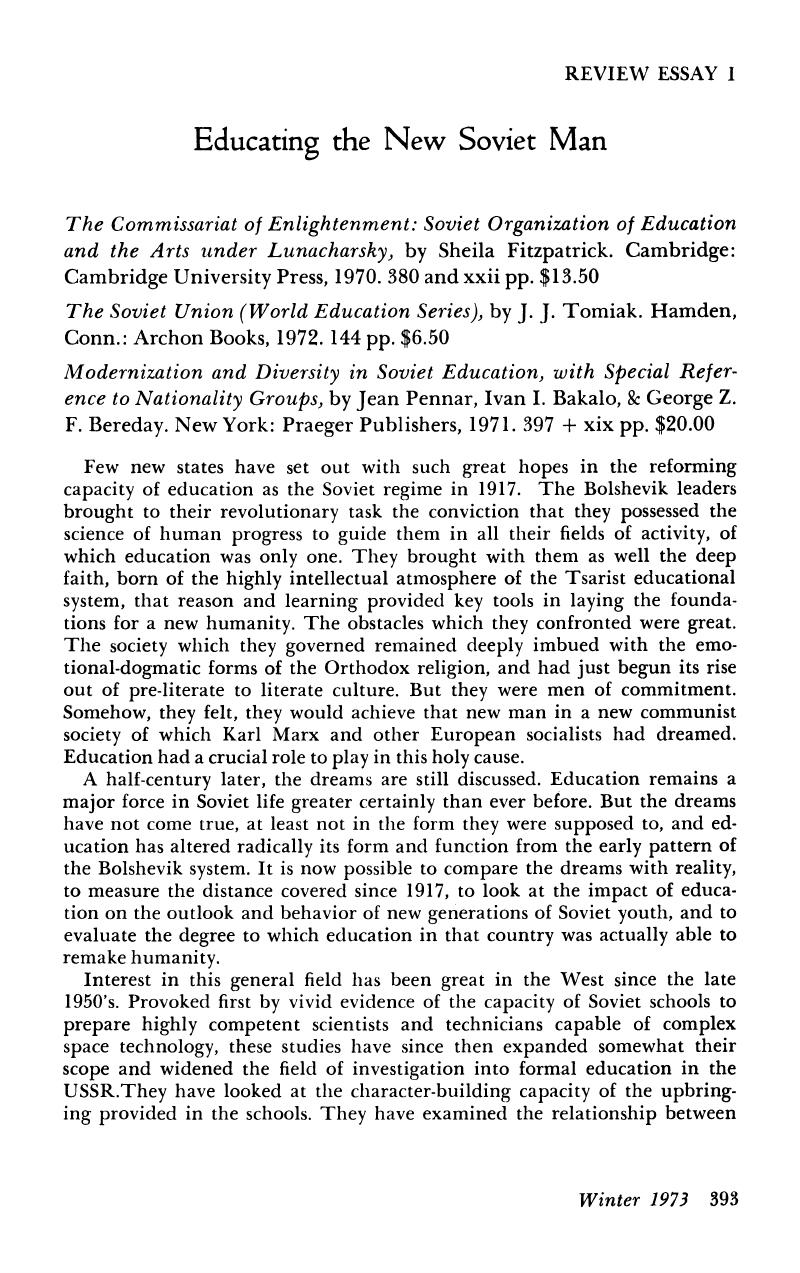No CrossRef data available.
Article contents
Educating the New Soviet Man
Published online by Cambridge University Press: 24 February 2017
Abstract

- Type
- Review Essay I
- Information
- Copyright
- Copyright © 1973 by New York University
References
Notes
1. Pennar, Jean, Bakalo, Ivan I. & Bereday, George Z. F., Modernization and Diversity in Soviet Education, with Special Reference to Nationality Groups (New York, 1971), p. 113.Google Scholar
2. Fitzpatrick, Sheila, The Commissariat of Enlightenment: Soviet Organization of Education and the Arts under Lunacharsky (Cambridge, 1970), p. 32.Google Scholar
3. Ibid., p. 215.Google Scholar
4. Ibid., p. 254.Google Scholar
5. Pennar, , Modernization, p. 60.Google Scholar
6. Ibid., p. 176.Google Scholar
7. Ibid., p. 177.Google Scholar
8. Szporluk, Roman, “The Nations of the USSR in the 1970's,” Survey (Autumn, 1971): 71.Google Scholar
9. Tomiak, J. J., The Soviet Union (World Education Series) (Hamden, Conn., 1972), p. 27.Google Scholar
10. Pennar, , Modernization, p. 43.Google Scholar
11. Korolev, Fedor, “The October Revolution and the Education of the New Man,” Sovetskaia pedagogika (November, 1967 [reprinted in translation in Soviet Education, October, 1968]): 45.Google Scholar
12. Bronfenbrenner, Urie, Two Worlds of Childhood: USA and USSR (New York, 1970), p. 80.Google Scholar
13. Wiles, Peter, “Convergence: Possibility and Probability,” in Balinsky, Alexander et al, Planning and the Market in the USSR: The 1960's (New Brunswick, N.J., 1967), p. 98.Google Scholar


